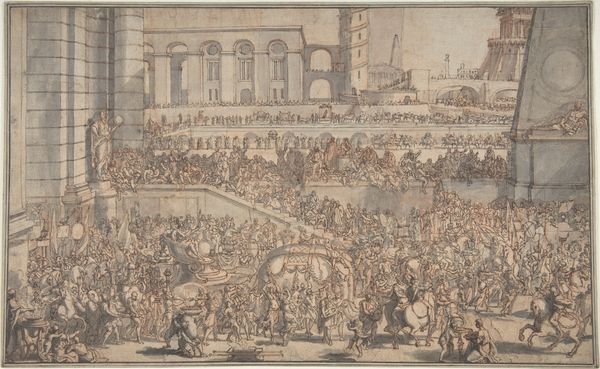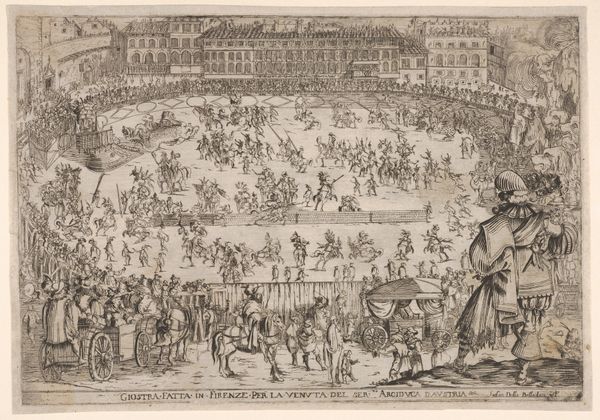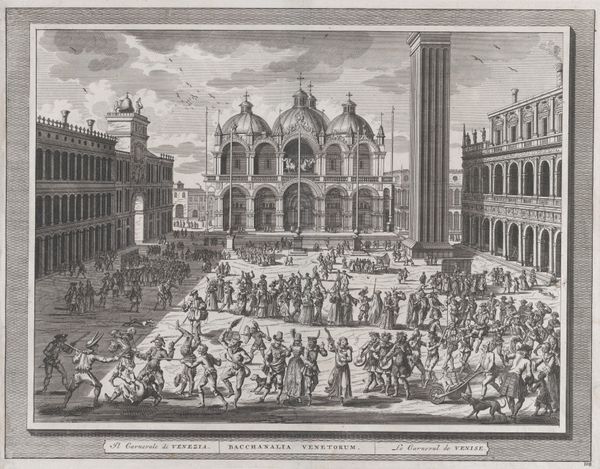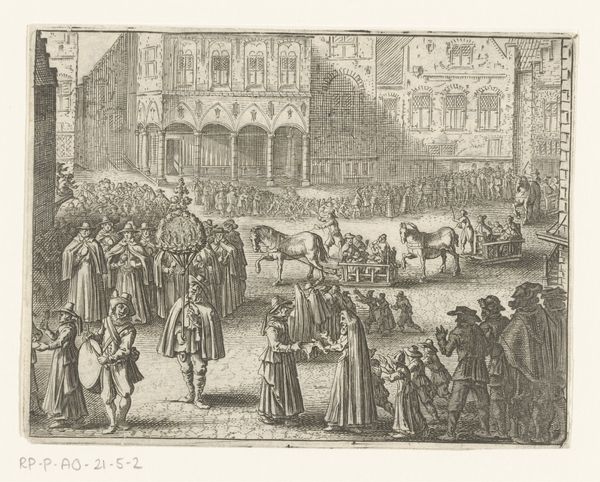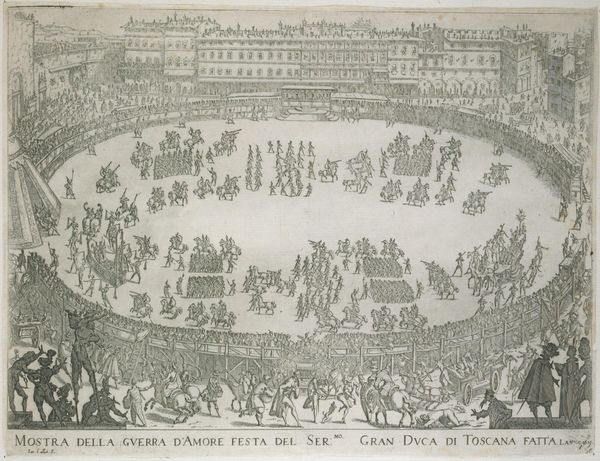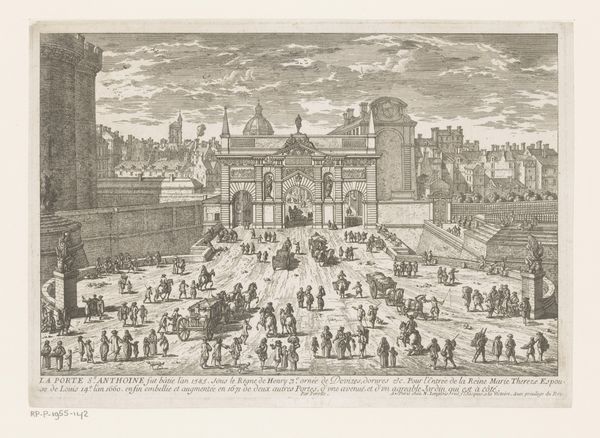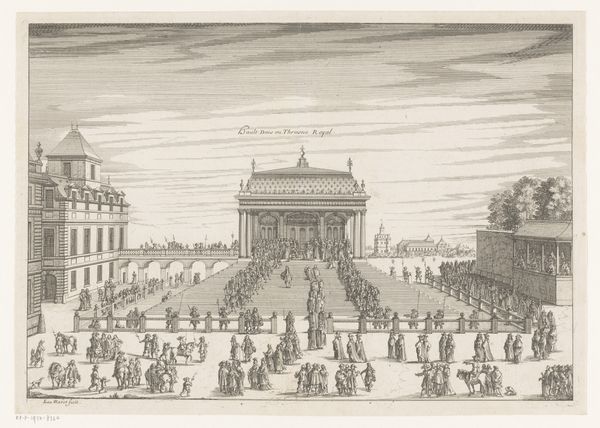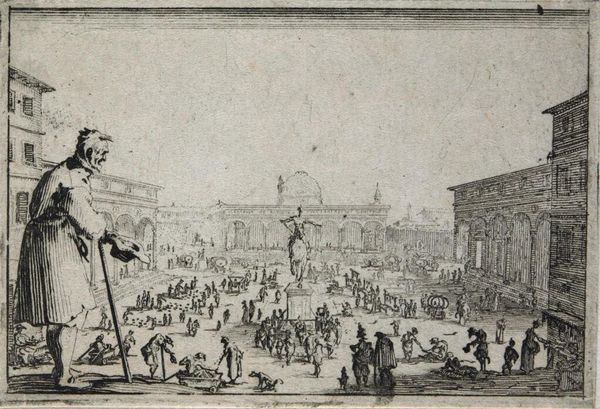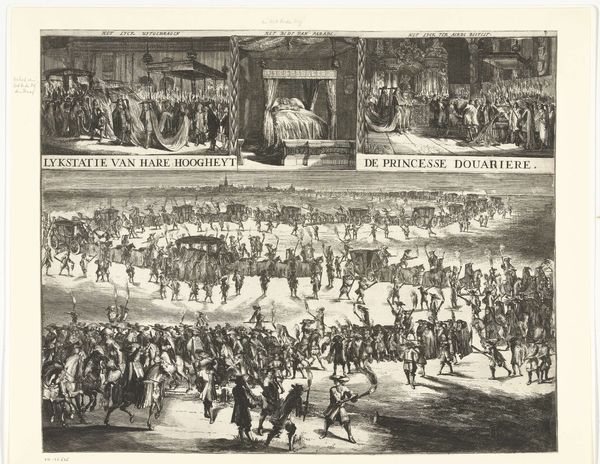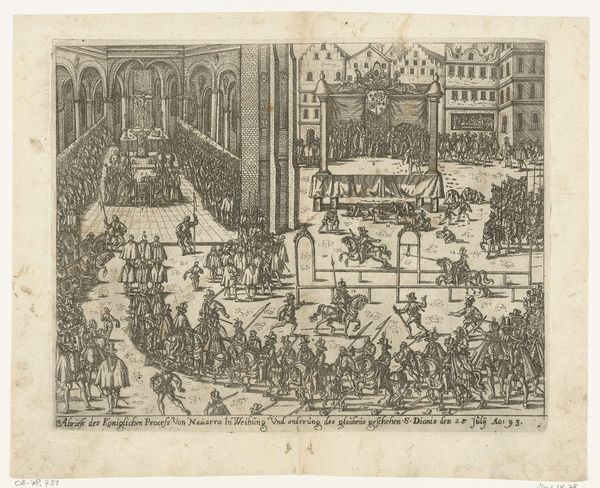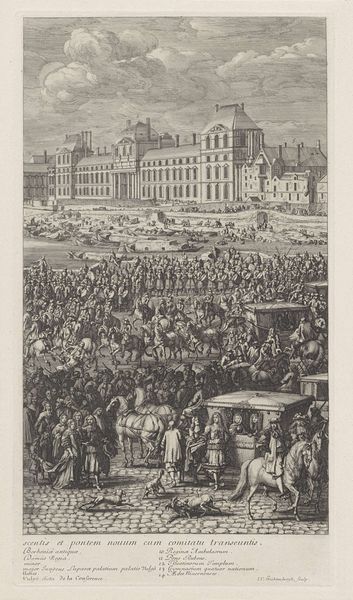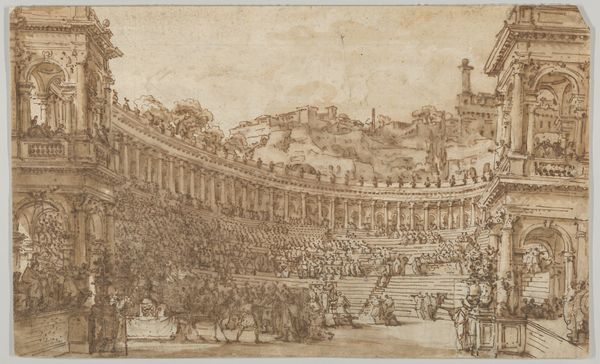
Proclamatie te Gent van Karel II van Spanje als graaf van Vlaanderen (blad 5), 1666 1666 - 1667
0:00
0:00
print, engraving
#
baroque
#
mechanical pen drawing
# print
#
pen sketch
#
sketch book
#
figuration
#
personal sketchbook
#
sketchwork
#
pen-ink sketch
#
pen work
#
sketchbook drawing
#
cityscape
#
history-painting
#
storyboard and sketchbook work
#
sketchbook art
#
engraving
Dimensions: height 354 mm, width 444 mm
Copyright: Rijks Museum: Open Domain
This engraving, made in 1666 by Lucas Vorsterman II, depicts the proclamation of Charles II of Spain as Count of Flanders in Ghent. The scene teems with figures, but the eye is drawn to the central column topped with a statue, an ancient symbol of power and stability. Consider the obelisk form itself. From ancient Egypt, where obelisks honored the sun god Ra, to its later adoption by Roman emperors as symbols of their dominion, this shape has transcended cultures. It speaks to an innate human desire for permanence and authority. Here in Ghent, the column reaffirms the new Count’s legitimacy. But its meaning isn't static. Think of how, in Renaissance Italy, the rediscovery of classical forms infused them with new humanist ideals. Likewise, this column is repurposed, its symbolism layered with the specific political context of 17th-century Flanders. The collective memory of such forms shapes their interpretation. Even today, such symbols evoke powerful, often subconscious, responses tied to our shared cultural past. This image is a potent reminder of how symbols morph and resurface across time, bearing witness to history's cyclical nature.
Comments
No comments
Be the first to comment and join the conversation on the ultimate creative platform.
